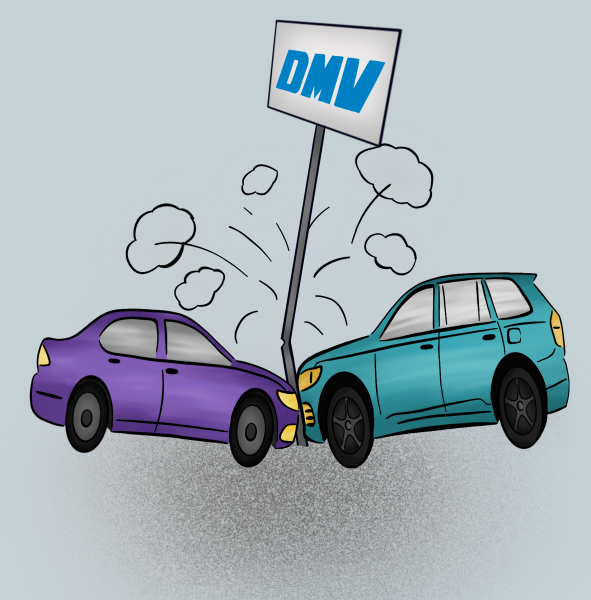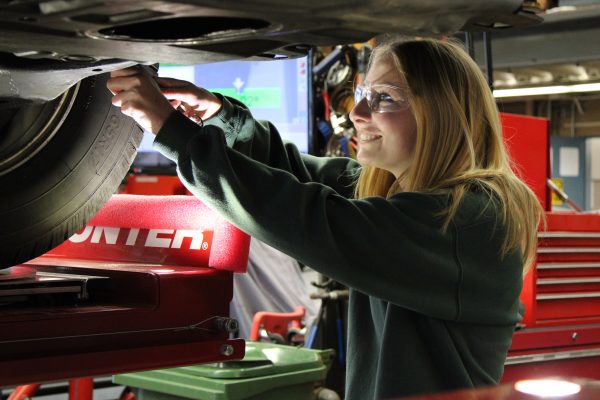Dangerous Teen Drinking Culture an American Tradition
October 31, 2016
Along the back leather wall of my living room couch is a mahogany table in which bottles gleam exorbitant shades of green, blue, and brown. I’ve often witnessed the extraction of these bottles during times of celebration, and while other’s Christmases are populated with plastic sleds or ski hills, one of my strongest associations with Christmas is the deep pink of vanilla ice cream tinted with Chambord.
Having been introduced to alcohol at a young age, in the context of various holidays, I’ve had the European experience of understanding alcohol as an appendage to celebration, rather than the more common experience of seeing alcohol as a means of recklessness or irresponsibility. Such young proximity to alcohol, however, is no American hallmark. Most would scorn my parents’ liberal approach.
Many Americans disapprove of the European drinking model, in which those above the age of 16 are allowed to imbibe in public, but few realize the consequences of shunning the policy. It is easier to imagine throes of teens drinking recklessly along cobblestone streets than it is to more accurately envision the European drinking model, where teens, like those in Barcelona, sooner partake in lightly spiked hot chocolate and churros than they do in straight liquor.
Rather than foster excessive drinking, the European drinking model has encouraged a kind of understanding of alcohol and has dissuaded the binge-drinking culture which endangers so many young Americans. In fact, the concept of binge-drinking is so new to Europe, presumably having been introduced in a wave of American influence, that the term itself wasn’t ushered into the French national dictionary until just last year.
While “le binge drinking” may be a new term in France, disregard for moderation is a long-standing American value. As our country has long championed the “bigger is better” perspective, the fact that irresponsible drinking is a national concern is no surprise. The extent of our binge-drinking problem, however, is even larger than many may believe. According to a July 30, 2013 article by Hannah Loewentheil in Daily Mail, our rate of female binge drinking exceeds that of any other developed nation.
Most of the flaws in the American approach to alcohol can be attributed to the ironic effect of our policies, or the so-called “forbidden fruit-dilemma.” The Independent Institute defines this dilemma as when “conventional wisdom presumes that a prohibitory law will have the desired effect [yet such laws] show the opposite effect: the behavior they are supposed to inhibit actually increases.”
The fact is that kids are going to drink. The question is not whether or not they will, but under what circumstances. Many scorn the idea of sharing a glass of merlot with their teen in a family setting; few recognize the effect of their “moral” restrictions. Forced to imbibe in secrecy and cloistered by the pressures of law and familial expectation, teens often partake in injudicious, hasty imbibing of drink beside which the believed “indecency” of the family setting glass of wine pales. Many of these activities, such as “pre-gaming,”‘ the act of binge-drinking before attending events – or the drinking of cheap vodka smuggled in water bottles, is among the most dangerous forms of alcohol consumption.
By making hard and fast rules about alcohol we cede the privilege of regulation: in forcing our youth to drink in secrecy, we encourage covert bingeing. Clinging to our naive regulatory stance on alcohol is exacerbating the problem, not solving it. It is only through the adoption of a tradition of moderation modeled by adults and practiced by teens, as our peers across the Atlantic already have, that we will teach our citizens how to drink responsibly.




